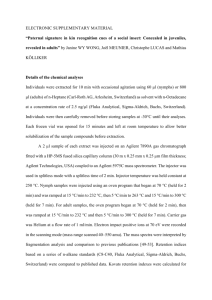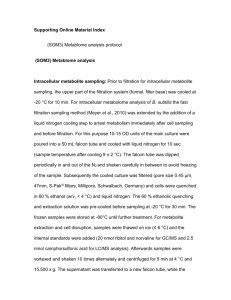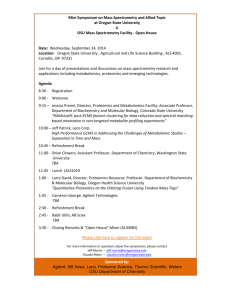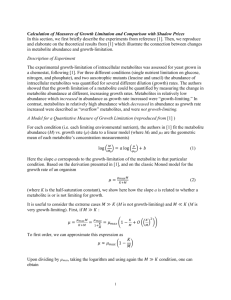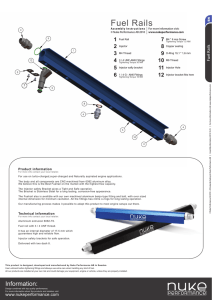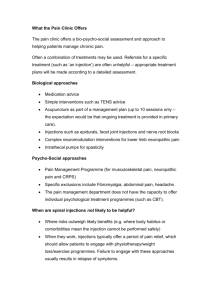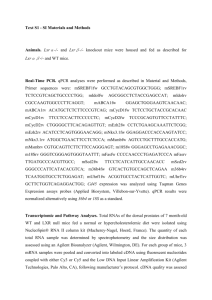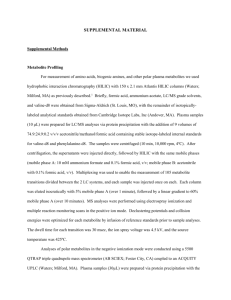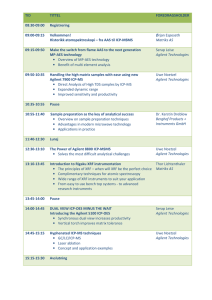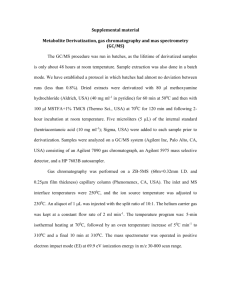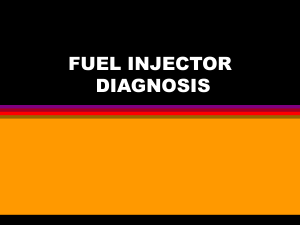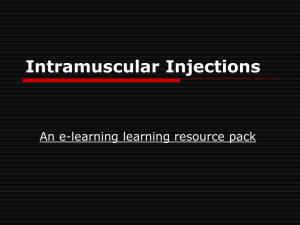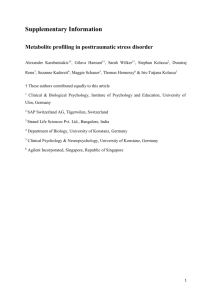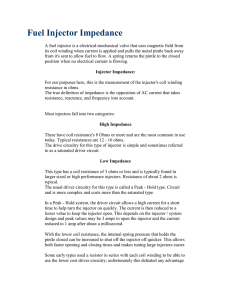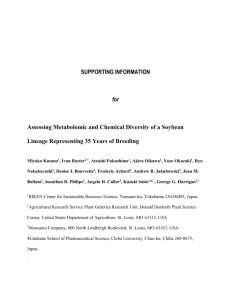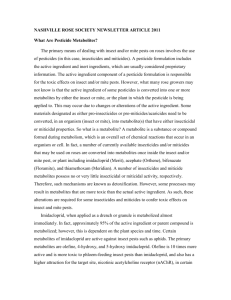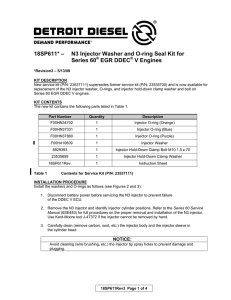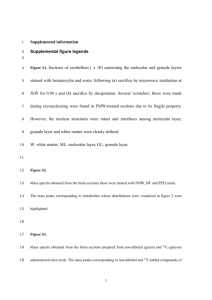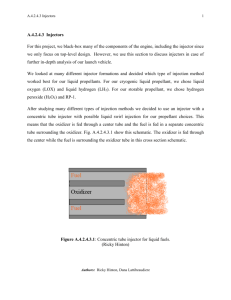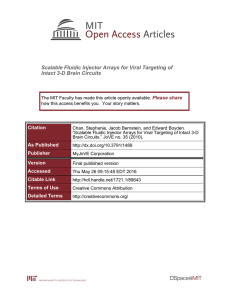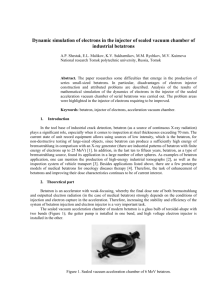Supplementary Methods (docx 14K)
advertisement
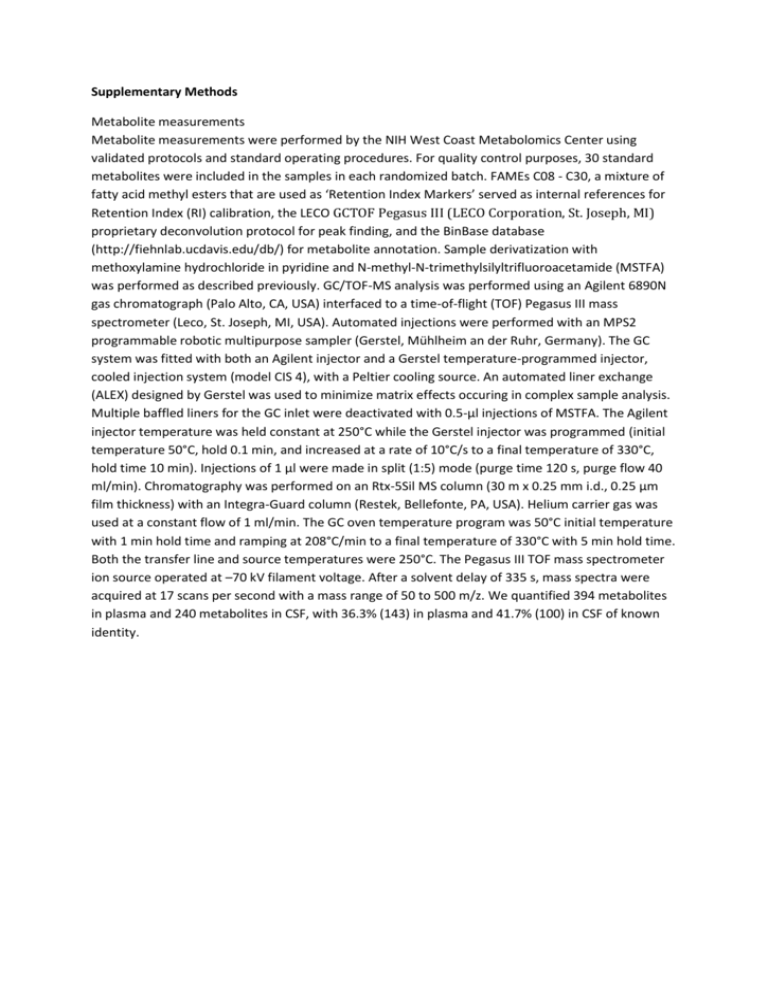
Supplementary Methods Metabolite measurements Metabolite measurements were performed by the NIH West Coast Metabolomics Center using validated protocols and standard operating procedures. For quality control purposes, 30 standard metabolites were included in the samples in each randomized batch. FAMEs C08 - C30, a mixture of fatty acid methyl esters that are used as ‘Retention Index Markers’ served as internal references for Retention Index (RI) calibration, the LECO GCTOF Pegasus III (LECO Corporation, St. Joseph, MI) proprietary deconvolution protocol for peak finding, and the BinBase database (http://fiehnlab.ucdavis.edu/db/) for metabolite annotation. Sample derivatization with methoxylamine hydrochloride in pyridine and N-methyl-N-trimethylsilyltrifluoroacetamide (MSTFA) was performed as described previously. GC/TOF-MS analysis was performed using an Agilent 6890N gas chromatograph (Palo Alto, CA, USA) interfaced to a time-of-flight (TOF) Pegasus III mass spectrometer (Leco, St. Joseph, MI, USA). Automated injections were performed with an MPS2 programmable robotic multipurpose sampler (Gerstel, Mühlheim an der Ruhr, Germany). The GC system was fitted with both an Agilent injector and a Gerstel temperature-programmed injector, cooled injection system (model CIS 4), with a Peltier cooling source. An automated liner exchange (ALEX) designed by Gerstel was used to minimize matrix effects occuring in complex sample analysis. Multiple baffled liners for the GC inlet were deactivated with 0.5-µl injections of MSTFA. The Agilent injector temperature was held constant at 250°C while the Gerstel injector was programmed (initial temperature 50°C, hold 0.1 min, and increased at a rate of 10°C/s to a final temperature of 330°C, hold time 10 min). Injections of 1 µl were made in split (1:5) mode (purge time 120 s, purge flow 40 ml/min). Chromatography was performed on an Rtx-5Sil MS column (30 m x 0.25 mm i.d., 0.25 µm film thickness) with an Integra-Guard column (Restek, Bellefonte, PA, USA). Helium carrier gas was used at a constant flow of 1 ml/min. The GC oven temperature program was 50°C initial temperature with 1 min hold time and ramping at 208°C/min to a final temperature of 330°C with 5 min hold time. Both the transfer line and source temperatures were 250°C. The Pegasus III TOF mass spectrometer ion source operated at –70 kV filament voltage. After a solvent delay of 335 s, mass spectra were acquired at 17 scans per second with a mass range of 50 to 500 m/z. We quantified 394 metabolites in plasma and 240 metabolites in CSF, with 36.3% (143) in plasma and 41.7% (100) in CSF of known identity.
